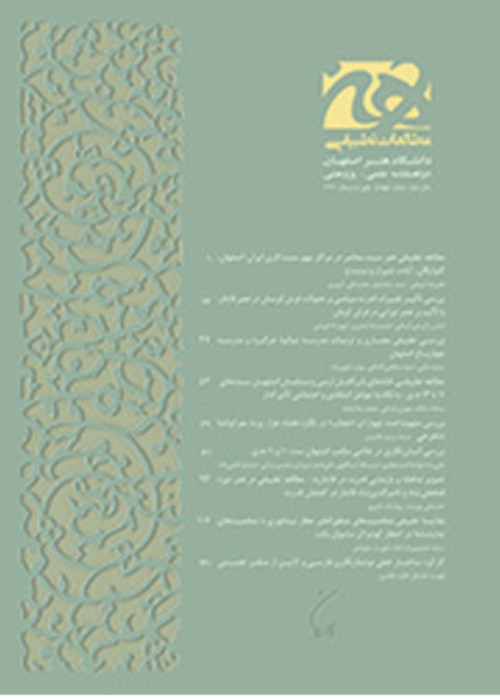A Comparison between Contemporary and Old Terms of Coloring Raw Materials of Glazes in Iran's Islamic Era
Author(s):
Abstract:
Compared to its past, a fundamental transformation occurred in making various glazes and utilizing coloring materials for ceramic works and pottery during the Islamic era in Iran. Numerous terms for such materials are seen in the ancient texts written by scientists and authors of that era but a complete and full identification and introduction of them has not yet been presented. The important point is that a lot of ceramic production techniques and its raw materials are brought in those texts, study of which sometimes provides proper solutions for technicians. But the applied terms in them are conventional words that are not used much today. This has made understanding of these texts difficult for the readers since scientific words are mostly used for these materials in today’s research sources. Hence, it seems that identification of these terms is quite essential in facilitating the reading of ancient texts which provide great help in restoration of traditional arts. Primarily, this article deals with analyzing and introducing new words for the raw materials in coloration of glazes. Then, identification of ancient words used in the Islamic era is introduced via using ancient texts. Finally, comparison of ancient and new terms is done by qualitative analysis of the data that is an answer to the following questions: what coloring materials did our ancestors use for glazes? are those materials applied today in production of glazes? In addition to providing the synonyms for many old terms that could aid in reading old texts and achieving the ancestors’ production methods for various types of glazes, the results of this study show that the diversity of ancient words for each glaze coloring material was more than the diversity of new terms but a lot of those words are forgotten today and have been replaced by new chemical science terms. Also, it is mentioned that the new identified compositions were not used in ancient glazes and thus the terms for them have no equivalent in the past.
Keywords:
Language:
Persian
Published:
Journal of Motaleate-e Tatbighi-e Honar, Volume:4 Issue: 7, 2014
Page:
29
magiran.com/p1320153
دانلود و مطالعه متن این مقاله با یکی از روشهای زیر امکان پذیر است:
اشتراک شخصی
با عضویت و پرداخت آنلاین حق اشتراک یکساله به مبلغ 1,390,000ريال میتوانید 70 عنوان مطلب دانلود کنید!
اشتراک سازمانی
به کتابخانه دانشگاه یا محل کار خود پیشنهاد کنید تا اشتراک سازمانی این پایگاه را برای دسترسی نامحدود همه کاربران به متن مطالب تهیه نمایند!
توجه!
- حق عضویت دریافتی صرف حمایت از نشریات عضو و نگهداری، تکمیل و توسعه مگیران میشود.
- پرداخت حق اشتراک و دانلود مقالات اجازه بازنشر آن در سایر رسانههای چاپی و دیجیتال را به کاربر نمیدهد.
دسترسی سراسری کاربران دانشگاه پیام نور!
اعضای هیئت علمی و دانشجویان دانشگاه پیام نور در سراسر کشور، در صورت ثبت نام با ایمیل دانشگاهی، تا پایان فروردین ماه 1403 به مقالات سایت دسترسی خواهند داشت!
In order to view content subscription is required
Personal subscription
Subscribe magiran.com for 70 € euros via PayPal and download 70 articles during a year.
Organization subscription
Please contact us to subscribe your university or library for unlimited access!


